It’s a California-to-Texas-to-California story, a story of beatniks and hippies, a story of dozens of musicians who performed hundreds of songs that we listened to thousands of times a half-century ago.
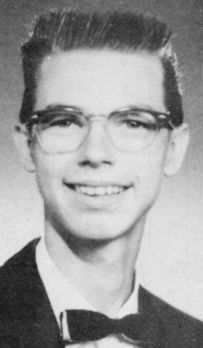 Chester Leo Helms was born in 1942 in Santa Maria, California. After his father died when Chet was nine, his mother, Novella, remarried. Chet’s stepfather, Dr. John W. Moon, a native of Korea, was a naturalized U.S. citizen and a product of the California college system. But the family left California, eventually settling in Fort Worth. According to one website devoted to Helms, he attended an elementary school on Page Street. That would be Daggett Elementary.
Chester Leo Helms was born in 1942 in Santa Maria, California. After his father died when Chet was nine, his mother, Novella, remarried. Chet’s stepfather, Dr. John W. Moon, a native of Korea, was a naturalized U.S. citizen and a product of the California college system. But the family left California, eventually settling in Fort Worth. According to one website devoted to Helms, he attended an elementary school on Page Street. That would be Daggett Elementary.
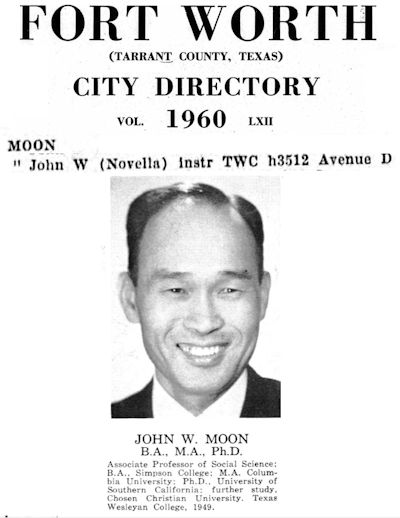 By the late 1950s Dr. Moon was a professor of history at Texas Wesleyan College. Chet’s mother taught school in Everman.
By the late 1950s Dr. Moon was a professor of history at Texas Wesleyan College. Chet’s mother taught school in Everman.
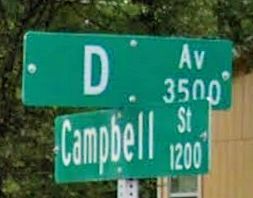
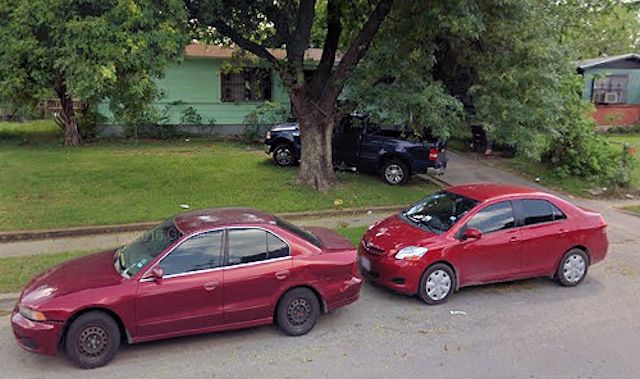 The family lived in a modest house at 3512 Avenue D just three blocks east of TWC and one block east of the house where Lawton Williams wrote “Fraulein.”
The family lived in a modest house at 3512 Avenue D just three blocks east of TWC and one block east of the house where Lawton Williams wrote “Fraulein.”
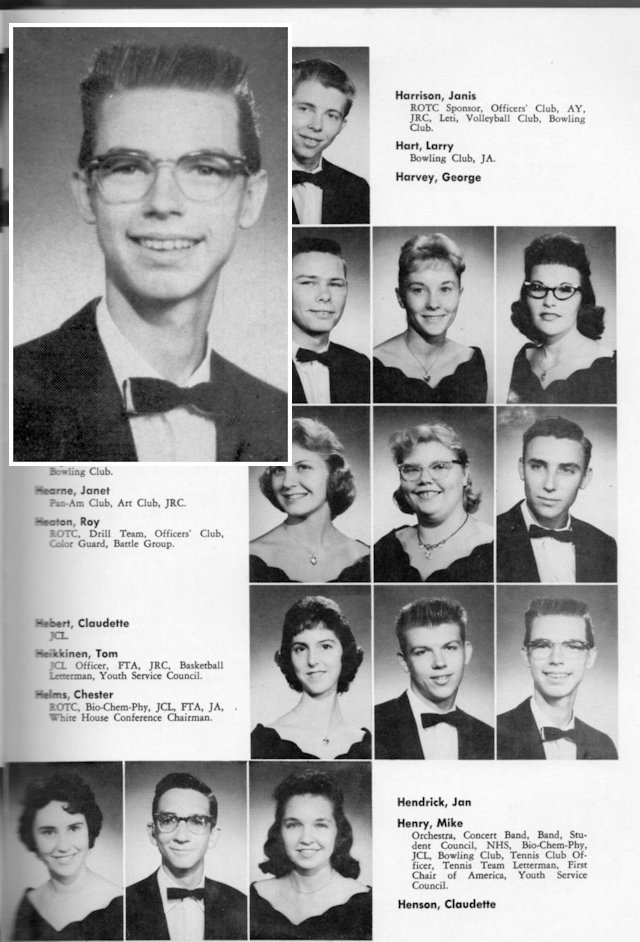 Chet and his two younger brothers attended Poly High School, where Chet was a member of Junior Classical League, Bio-Chem-Phy, ROTC, Future Teachers of America, Junior Achievement, and the White House Conference on Children and Youth.
Chet and his two younger brothers attended Poly High School, where Chet was a member of Junior Classical League, Bio-Chem-Phy, ROTC, Future Teachers of America, Junior Achievement, and the White House Conference on Children and Youth.
After graduating from Poly High in 1960, Helms enrolled at the University of Texas at Austin. He recalled: “I went originally as a math major, but within about three weeks of being in school, they came to me and said, ‘Well, you did very well on the I.Q. test; you did very well on your SATs; you kind of aced the University of Texas entrance exam . . . we’re givin’ you credit for this course and this course and this course.’ It was mostly English and math classes that I got advanced standing in.”
But Helms’s real talent lay in organization and promotion. At UT he volunteered as an organizer for the civil rights movement. He also was involved in Austin’s folk music scene, as was a bluesy singer—and self-described “misfit”—from Port Arthur named “Janis Joplin.”
In 1962 Helms dropped out of college. Inspired by the Beat Generation’s Jack Kerouac and Allen Ginsberg, Helms hit the road, hitchhiking to California.
“I hitchhiked back and forth between the East Coast and San Francisco a couple of times in that year,” Helms recalled. “We’d go through Austin. On one of these occasions, I met Janis there at a place called the Ghetto, where all the ‘beatniks’ from the University of Texas were. I had heard her sing. . . . For a few moments when I heard Janis, it raised the hair on the back of my neck. It was some core feeling that this person could provoke in me; it almost felt out of control on my part: Here’s someone who can have this effect on me.”
After hearing Joplin in Austin, Helms returned to San Francisco.
But in January 1963 Helms was back in Austin, where on January 19 Janis Joplin celebrated her twentieth birthday at Threadgill’s, a converted gas station. “I pretty much told her,” Helms recalled, “. . . that if she came to California, she would knock people in San Francisco on their ass.”
Four days later Helms and Joplin, toting her autoharp, hitchhiked from Austin to Fort Worth for a brief visit with Chet’s family on Avenue D. Then they hitchhiked to California. For the last short leg of the trip, Helms and Joplin treated themselves to a Greyhound bus ride into San Francisco. Helms lived in a boardinghouse on Page Street in the Haight-Ashbury district.
Fifty hours after they left Fort Worth, Joplin performed for the first time in San Francisco at a “beat” club called “Coffee and Confusion” (which had been an early motto of Fort Worth’s Cellar coffeehouse). At this point in her life—and for a limited time only—Janis Joplin was relatively unworldly. She saw the “deeply spiritual” Helms as romantic and worldly. Helms later said their friendship was platonic.
 When Helms and Joplin arrived in Haight-Ashbury, America’s counterculture was morphing. The label “beatnik” would soon yield to “hippie.” The counterculture’s taste in music, too, was morphing from unamplified folk music to amplified folk, folk-rock, rock, acid rock, etc.
When Helms and Joplin arrived in Haight-Ashbury, America’s counterculture was morphing. The label “beatnik” would soon yield to “hippie.” The counterculture’s taste in music, too, was morphing from unamplified folk music to amplified folk, folk-rock, rock, acid rock, etc.
San Francisco—the adopted hometown first of Chet Helms and later of Janis Joplin—would develop a distinctive music in the 1960s: “the San Francisco sound.” The city would be called “the Liverpool of the United States”—a reference to Liverpool’s influence during the British Invasion of 1964.
 As American counterculture and its music were morphing, so was Chet Helms. The crewcut was replaced by shoulder-length hair, the clean-shaven cheeks by whiskers, the black-rimmed glasses by rimless glasses. In Haight-Ashbury the Baptist-raised boy “from a teetotalling family” who had drunk only “a few odd beers here and there” began selling marijuana. He experimented with methamphetamine, LSD, and peyote. This photo shows Helms with Jerry Garcia of the Grateful Dead in 1967. (San Francisco Chronicle photo by Jim Marshall.)
As American counterculture and its music were morphing, so was Chet Helms. The crewcut was replaced by shoulder-length hair, the clean-shaven cheeks by whiskers, the black-rimmed glasses by rimless glasses. In Haight-Ashbury the Baptist-raised boy “from a teetotalling family” who had drunk only “a few odd beers here and there” began selling marijuana. He experimented with methamphetamine, LSD, and peyote. This photo shows Helms with Jerry Garcia of the Grateful Dead in 1967. (San Francisco Chronicle photo by Jim Marshall.)
Helms also began to organize and host jam sessions for local bands in the basement of his boardinghouse on Page Street.
One of the bands was a guitar threesome. In 1965 Helms found the threesome a drummer, and with Helms’s help, the foursome took shape, and it took a name: Big Brother and the Holding Company. And Helms took a job: He became the band’s manager.
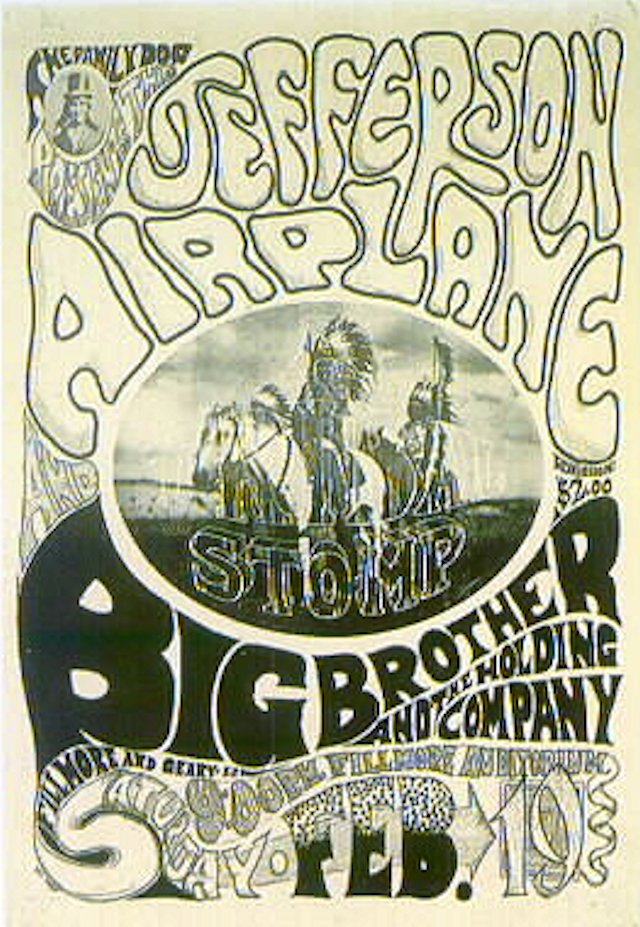 Meanwhile, Helms had become associated with Family Dog, a local commune that hosted dances and other events. But Family Dog lacked Chet Helms’s knack for organization and promotion. In February 1966 Helms founded Family Dog Productions and used that knack to promote concerts at the Fillmore Auditorium on Geary Boulevard. Helms and another promotions legend-to-be, Bill Graham, produced concerts on alternate weekends. But conflicts between Helms and Graham soon arose, and Helms began producing concerts at the Avalon Ballroom on Sutter Street.
Meanwhile, Helms had become associated with Family Dog, a local commune that hosted dances and other events. But Family Dog lacked Chet Helms’s knack for organization and promotion. In February 1966 Helms founded Family Dog Productions and used that knack to promote concerts at the Fillmore Auditorium on Geary Boulevard. Helms and another promotions legend-to-be, Bill Graham, produced concerts on alternate weekends. But conflicts between Helms and Graham soon arose, and Helms began producing concerts at the Avalon Ballroom on Sutter Street.
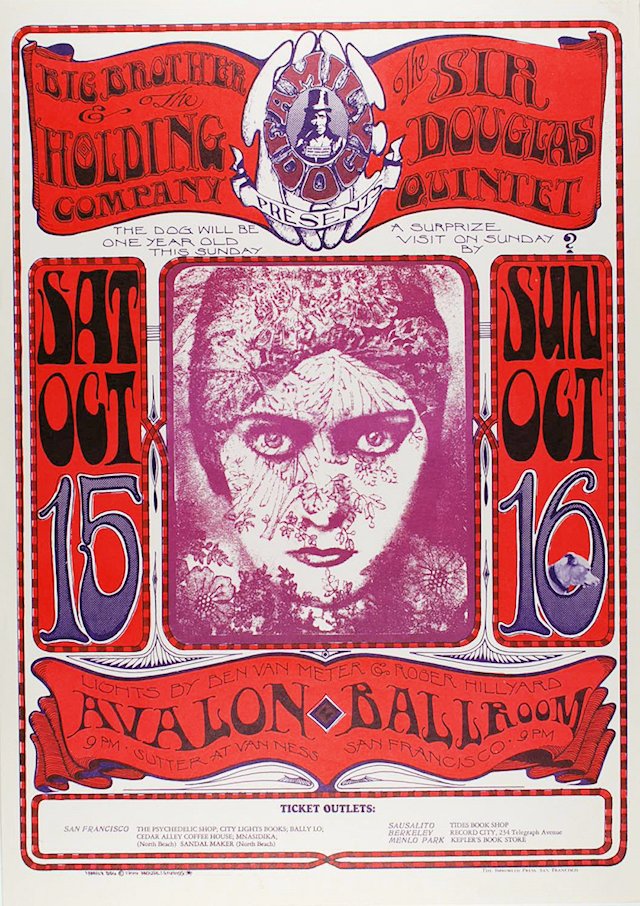 Soon Helms’s Big Brother and the Holding Company became the house band at the Avalon.
Soon Helms’s Big Brother and the Holding Company became the house band at the Avalon.
Meanwhile, Janis Joplin had bounced back to Austin, then bounced back to San Francisco. By then Helms and Big Brother were auditioning lead singers.
“We mass-auditioned fifty, sixty, eighty vocalists,” Helms recalled. Then Helms persuaded Joplin to audition, still convinced that she could “knock people in San Francisco on their ass.”
Joplin sang.
Big Brother listened.
Auditions ended.
Janis Joplin debuted with Big Brother at the Avalon on June 10, 1966.
But not everyone was knocked bass-ackwards. At least not at first. Big Brother guitarist Sam Andrew recalled his first impression of Joplin: “She came in, and she was dressed like a little Texan. She didn’t look like a hippie, she looked like my mother, who is also from Texas. She sang real well, but it wasn’t like, ‘Oh, we’re bowled over.’ . . . I mean she was good, but she had to learn how to do that. It took her about a year to really learn how to sing with an electric band.”
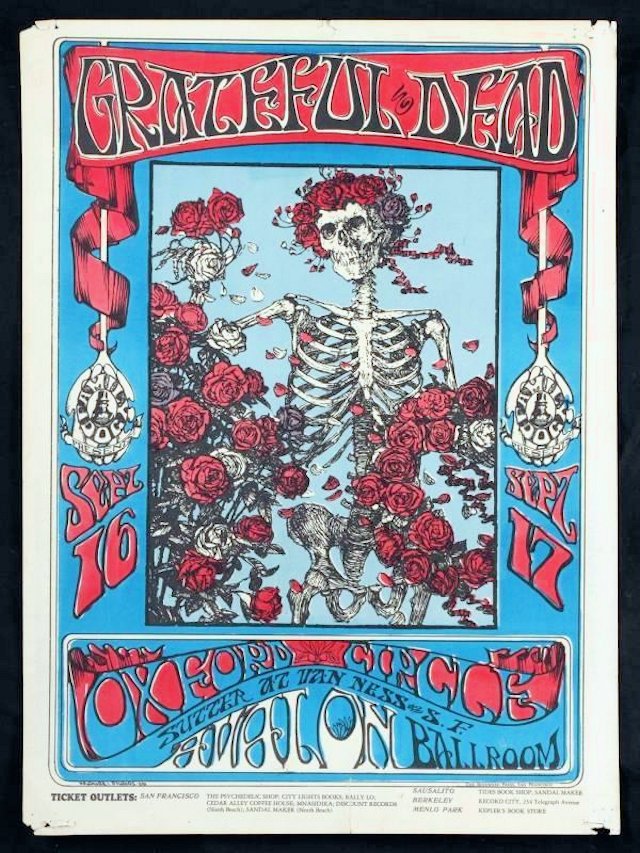 Then came the Summer of Love in 1967, when as many as 100,000 “flower children” converged on Haight-Ashbury.
Then came the Summer of Love in 1967, when as many as 100,000 “flower children” converged on Haight-Ashbury.
Journalist Ed Vulliamy wrote: “The Summer of Love had an empress, and her name was Janis Joplin.”
Likewise, Chet Helms, because of his concert promotions, has been called “the father of the Summer of Love.”
During that Summer of Love Chet Helms got Big Brother and Janis Joplin the appearance that made them famous: the Monterey Pop Festival, which had an attendance estimated as high as ninety thousand and was one of the highlights of the Summer of Love and a precursor of Woodstock two years later. Among the performers at the Monterey County Fairgrounds: Jefferson Airplane, the Who, the Grateful Dead, Jimi Hendrix, Eric Burdon and the Animals, Otis Redding, Ravi Shankar, Simon and Garfunkel, the Byrds, and the Mamas and the Papas.
On June 17, 1967 Chet Helms stood on the Monterey stage and introduced the second act of the day: Big Brother and the Holding Company with Janis Joplin. The band performed “Down on Me,” “Combination of the Two,” Harry,” “Roadblock,” and “Ball ’n’ Chain.”
Columbia Records signed the band to a recording contract on the basis of its performance at Monterey. Joplin would record two albums with Big Brother before leaving the band to begin her solo career. Meanwhile, Joplin’s friendship with Chet Helms would be strained as she increasingly turned to hard drugs while Helms returned to more-“organic” drugs.
Over the years Helms and his Family Dog Productions organized and promoted concerts by a veritable who’s who of 1960s music: Doors, Buffalo Springfield, Country Joe and the Fish, Moby Grape, Sopwith Camel, 13th Floor Elevators, Flying Burrito Brothers, Howlin’ Wolf, Bo Diddley, Muddy Waters, Byrds, Bill Haley and His Comets, Kinks, Eric Burdon and the Animals, Mothers of Invention, Lovin’ Spoonful, Buddy Guy, Paul Butterfield Blues Band, Buddy Miles, John Mayall, Steve Miller, Mike Bloomfield, Elvin Bishop, Blues Project with Al Kooper, Carlos Santana Blues Band, Sir Douglas Quintet, Grass Roots, Captain Beefheart, Blood, Sweat and Tears, Association, Iron Butterfly, Youngbloods with Jesse Colin Young, Vanilla Fudge, Steppenwolf, Poco, Blue Cheer, New Riders of the Purple Sage, Barry McGuire, It’s a Beautiful Day, Velvet Underground, Commander Cody, Joan Baez, Taj Mahal, and, yes, Flatt and Scruggs.
Chet Helms also promoted lectures by counterculture gurus such as Alan Watts, Timothy Leary, and Allen Ginsberg.
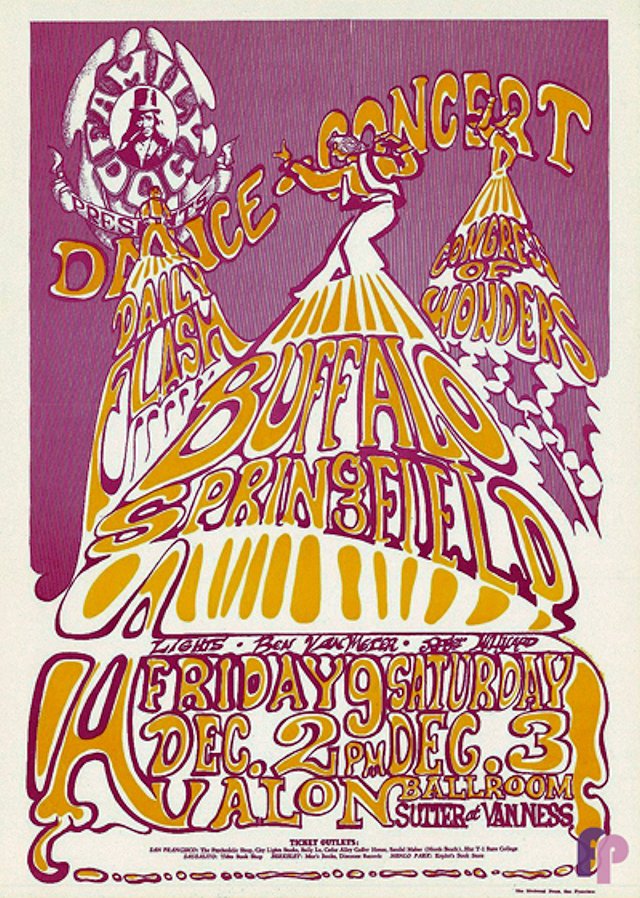 A companion development of the psychedelic music of the 1960s was psychedelic art. Family Dog Productions artists created psychedelic posters to promote concerts. The five concert posters in this post were created by Family Dog Productions. Original Family Dog posters are now collector’s items.
A companion development of the psychedelic music of the 1960s was psychedelic art. Family Dog Productions artists created psychedelic posters to promote concerts. The five concert posters in this post were created by Family Dog Productions. Original Family Dog posters are now collector’s items.
Chet Helms eased out of the promotion business in 1970 and operated an art gallery in San Francisco for several years.
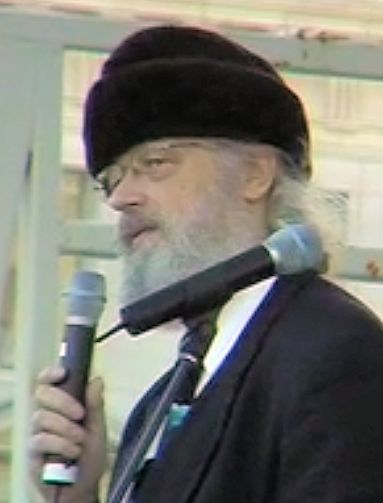 This photo shows Chet Helms in 2003.
This photo shows Chet Helms in 2003.
 Helms died in 2005 at age sixty-two. That was not very old, but he had outlived, for example, Ron “Pigpen” McKernan of the Grateful Dead, Jimi Hendrix, Jim Morrison of the Doors, Brian Jones of the Rolling Stones, Al Wilson of Canned Heat. And, of course, Janis Joplin. All dead before age thirty.
Helms died in 2005 at age sixty-two. That was not very old, but he had outlived, for example, Ron “Pigpen” McKernan of the Grateful Dead, Jimi Hendrix, Jim Morrison of the Doors, Brian Jones of the Rolling Stones, Al Wilson of Canned Heat. And, of course, Janis Joplin. All dead before age thirty.
Mickey Hart, drummer for the Grateful Dead, said: “Chet Helms was one of the founding fathers of the music scene here. He was more than just a promoter. He was really the heart and soul.”
Barry Melton, guitarist for Country Joe and the Fish, said Helms fostered an environment that helped bands progress. “There was an ethic unique to the time and place of San Francisco in the sixties, an extraordinary ethic of tolerance and acceptance,” Melton recalled. “Chet was the living embodiment of that tolerance and acceptance and openness that made it all happen. That element was very much a reflection of who he was.”
After Helms died, a memorial concert was held in Golden Gate Park to celebrate his life. The lineup of musicians read like a dozen Helms-promoted concerts of forty years earlier. Performing were members of Jefferson Airplane/Jefferson Starship, Sly and the Family Stone, Canned Heat, Country Joe and the Fish, Eric Burdon and War, Hot Tuna, the Turtles, Blue Cheer, It’s a Beautiful Day, Moby Grape, and Wavy Gravy.
Today his remains reside in a columbarium ten blocks northwest of the intersection of Haight and Ashbury streets.
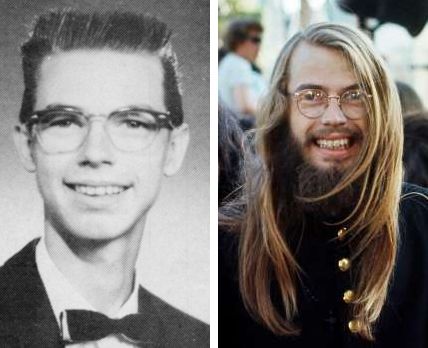
 In the words of the Grateful Dead, for Chester Leo Helms, a crewcut kid from Avenue D, “what a long, strange trip” it had been.
In the words of the Grateful Dead, for Chester Leo Helms, a crewcut kid from Avenue D, “what a long, strange trip” it had been.
(Thanks to Marion and Melvin Richeson, two ol’ Poly boys, for the tip about another ol’ Poly boy.)






I had the most amazing luck to have been born in San Francisco in 1950, so most of my teen years were steeped in LIVE music. I saw all the greats, starting with The Beatles at the Cow Palace and on to The Grateful Dead (my faves), Big Brother, Jimi Hendrix, The Doors, etc.—I mean Everybody! Chet’s venue: The Avalon, was always my favorite. Thanks!
He also went to school and lived in Cassville, Missouri when he was young.
Wow!!! I would never have imagined this! This was definitely the coolest story I’ve read in a long time. Great research snd great writing, Mike!!
Thanks. Yeah, when the Richesons told me about this ol’ Poly boy who went out to California, I was skeptical that there was a story in him. Wrong again!
Another home run. I so enjoyed learning about Chet.
Thanks, Jan. I was amazed that I had never heard of him before.
Always enjoy your posts. This one especially, as I spent a short time in SF during 1967’s ‘Summer of Love’; later that year I was in the Army and in Vietnam in 1968.
It’s hard to find, but you may want to track down the offbeat movie “You Are What You Eat” about this period in SF — Family Dog, Tiny Tim, Super Spade, and of course the Greta Garbo Home for Wayward Boys and Girls.
Thanks, Mike.
Probably same comments from Heights students about John Denver! Glad I went to Poly,’56, but didn’t know about this guy, probably because I didn’t really like most of the music he promoted!
My brother graduated with Helms in 1960…unfortunately, he’s not here now to let me ask if he was acquainted with Helms….
Dan, I suspect that Helms’s classmates would be as surprised as I was to learn the answer to “Whatever became of ol’ Chet?”
Came to this site as a result of reading your comments of our 50 year reunion. I had no knowledge of him before – what an incredible story. No wonder you enjoyed researching it! WOW! Thanks, Mike, again, for your stories!
Ain’t that something? When Richeson told me about some guy from Poly who went to California, the story did not sound very promising, but the more I dug, the more interesting it got.
Wow!! I lived at 3307 Ave D and worked across the street from
him (Safeway store), am sure we crossed paths.
Thanx M and M and Mike N
I had great fun uncovering the life of this ol’ Poly boy.
Blown away man, lol. You outdid yourself Mike.
Thanks, Ramiro. I was blown away, too. Had to pick my jaw up off the floor several times as I dug into this ol’ Poly boy.